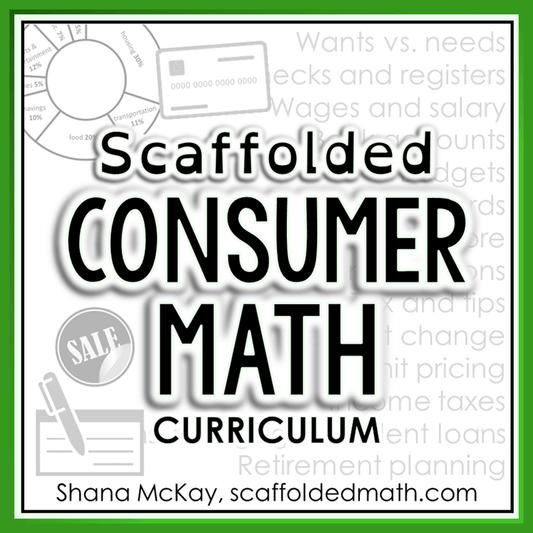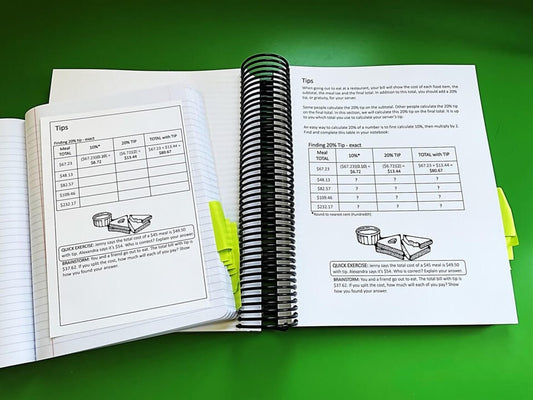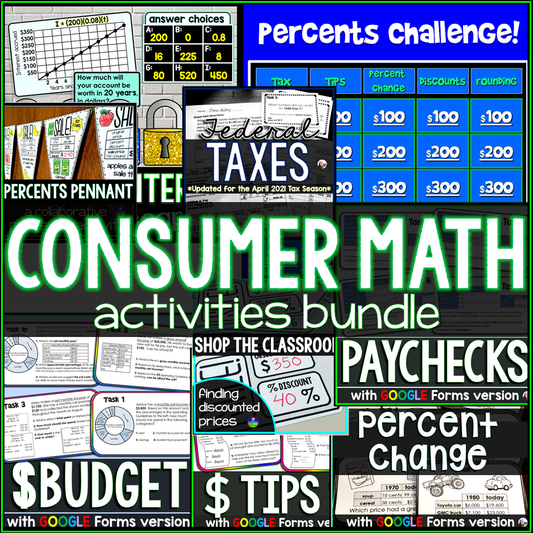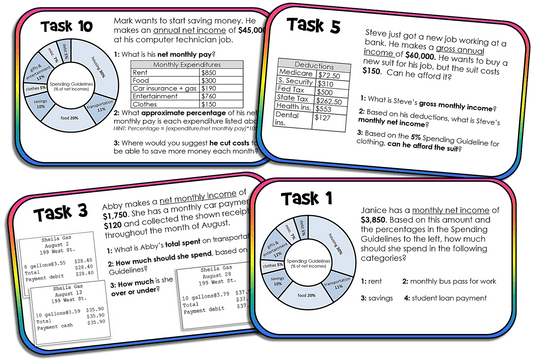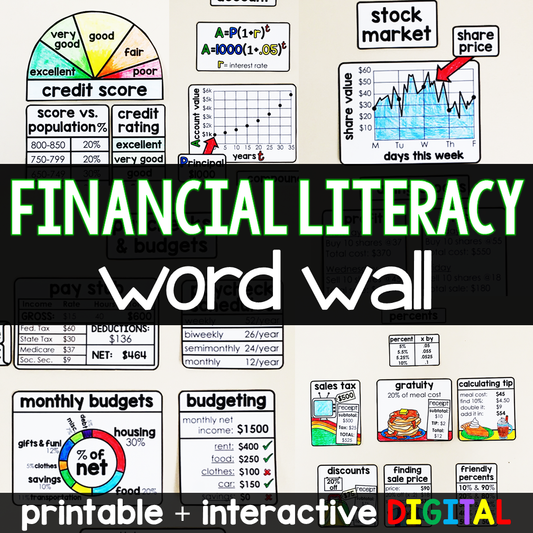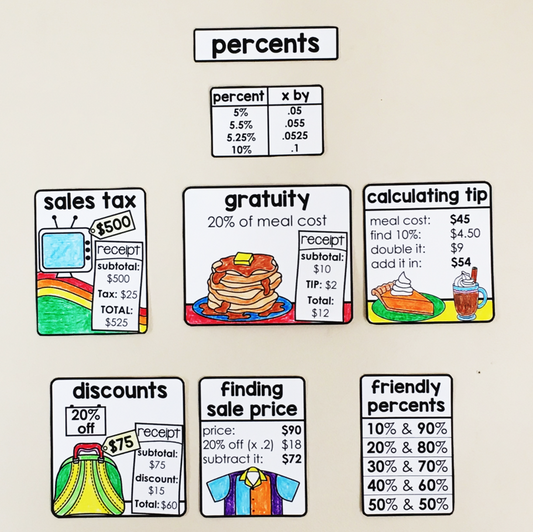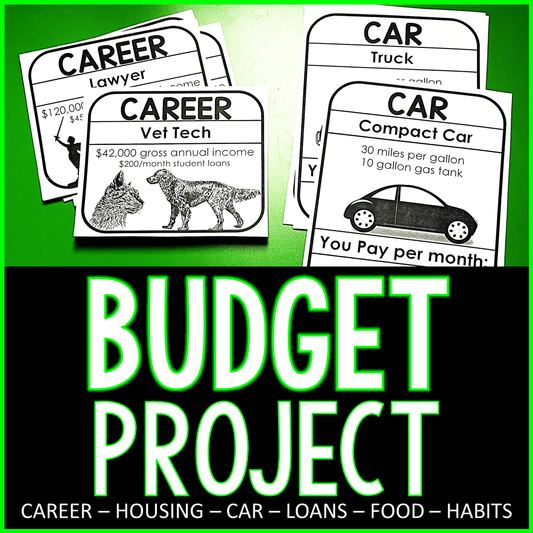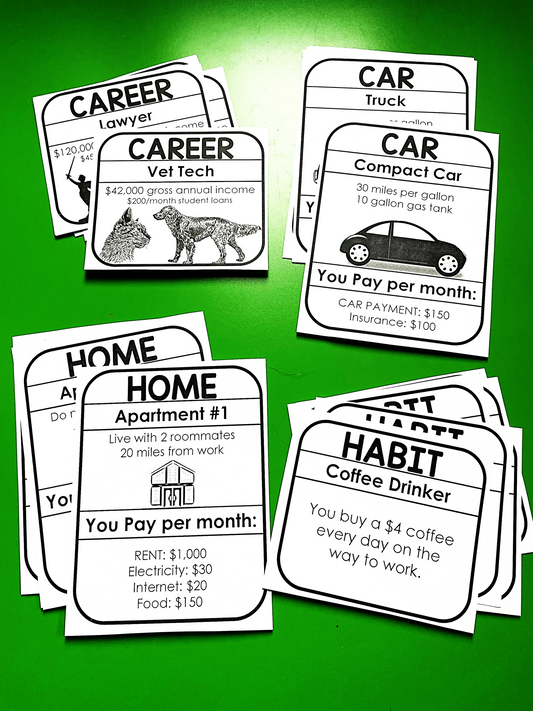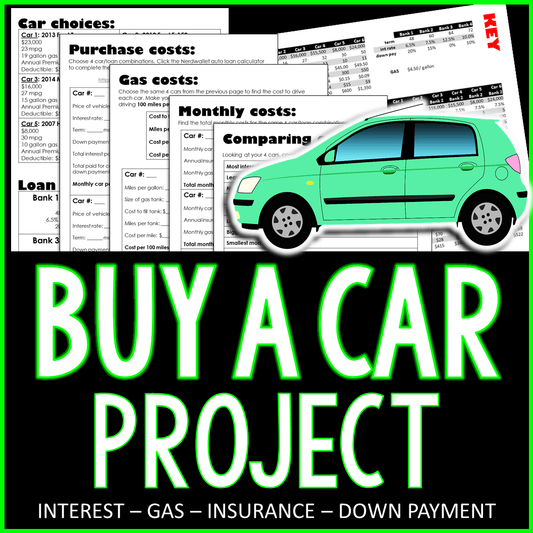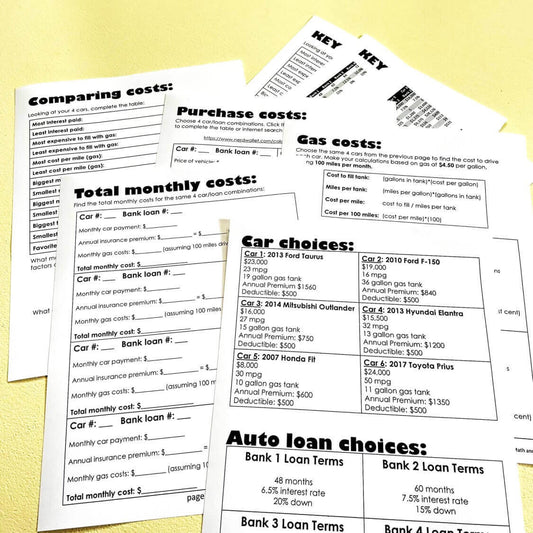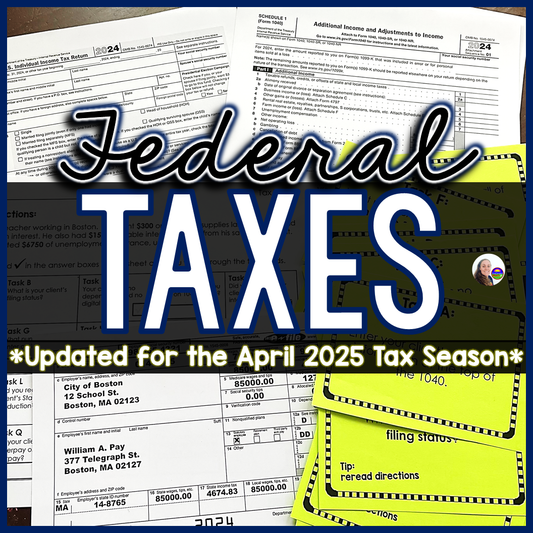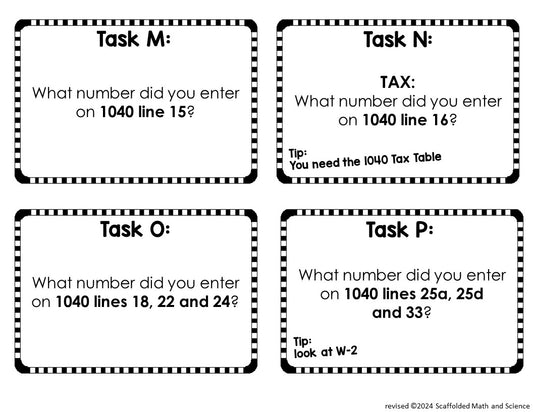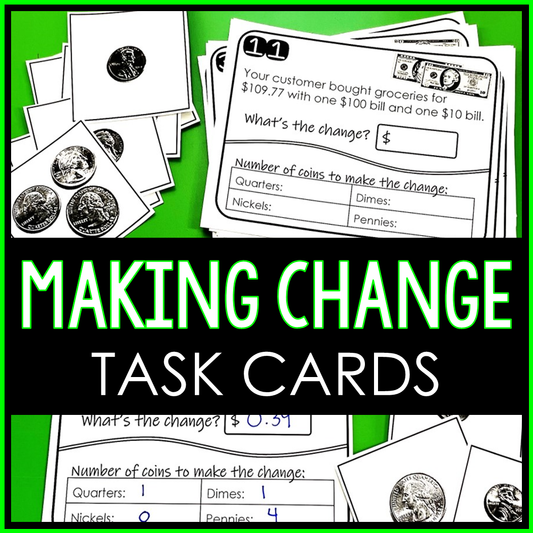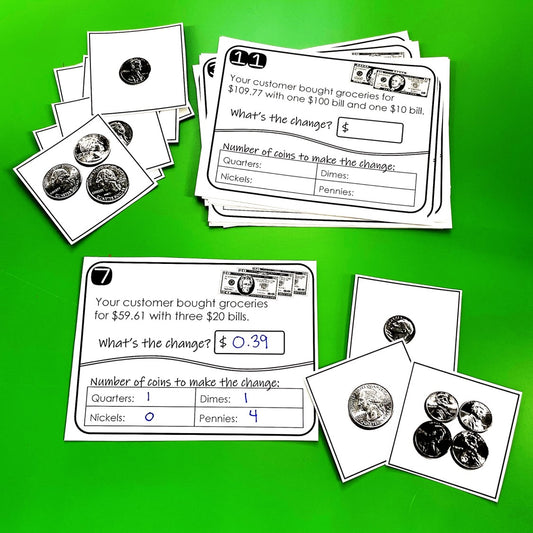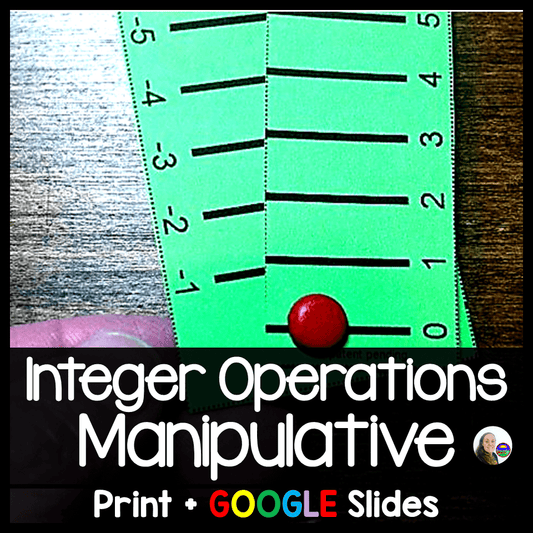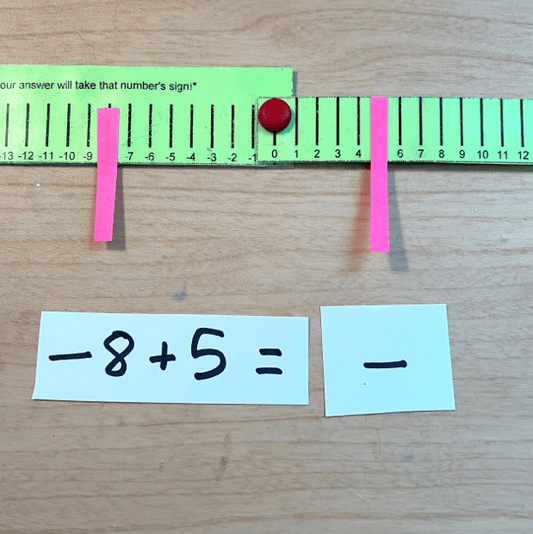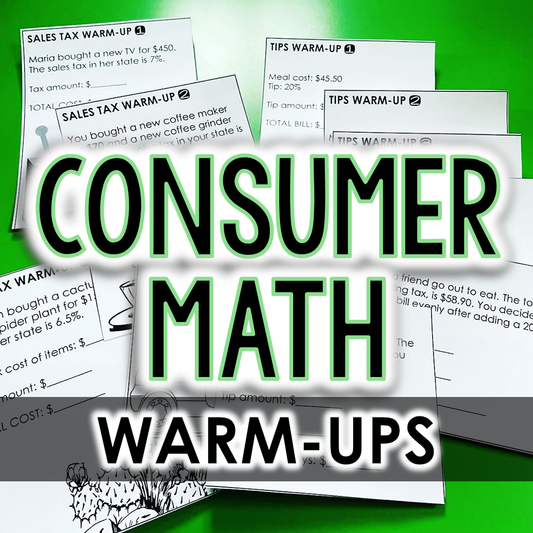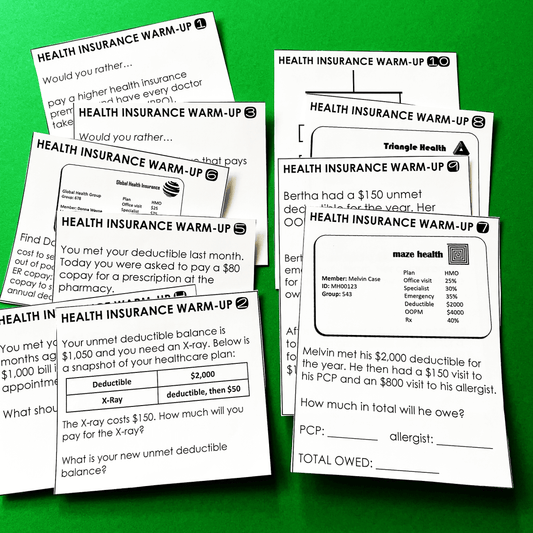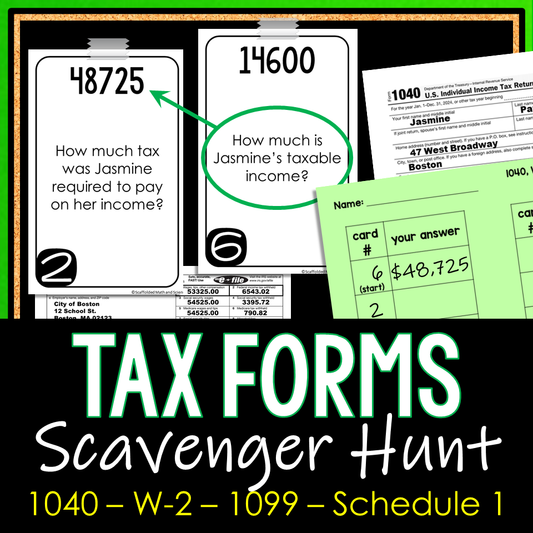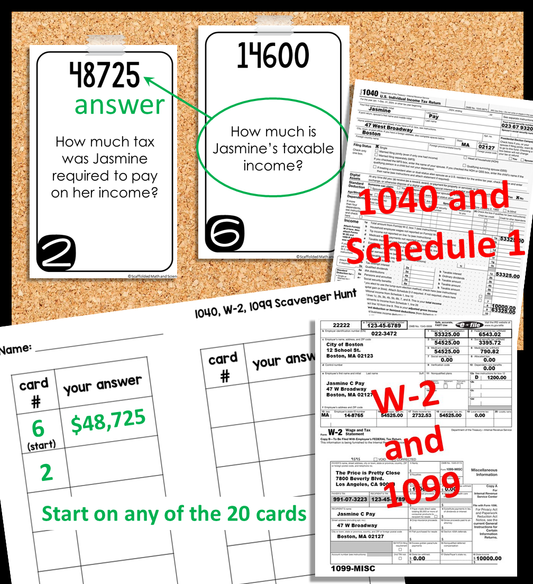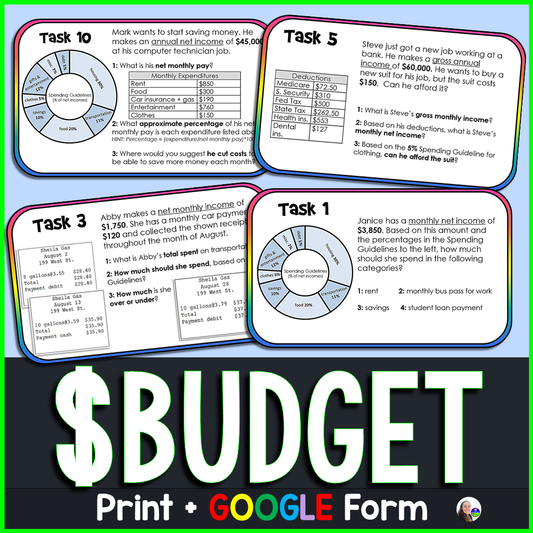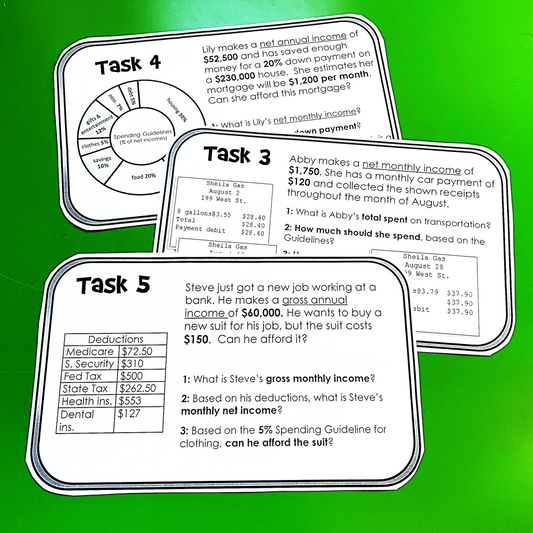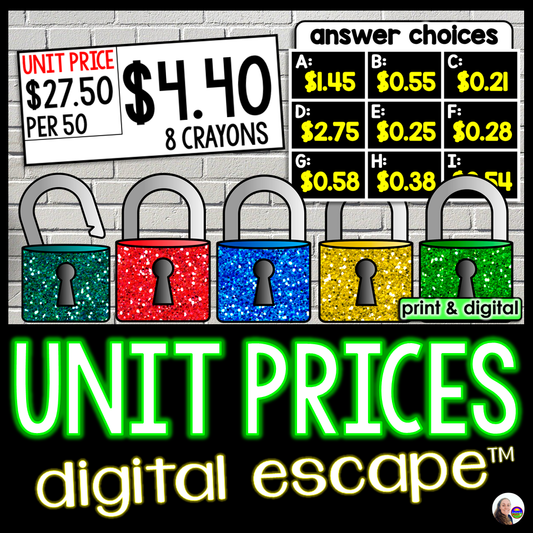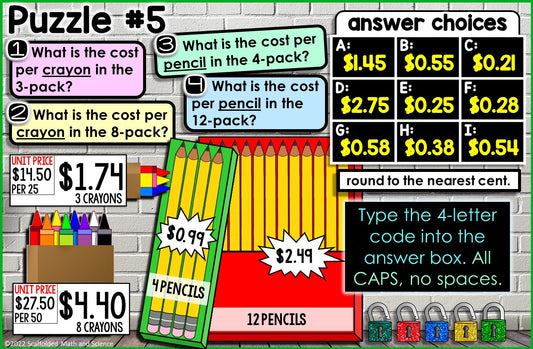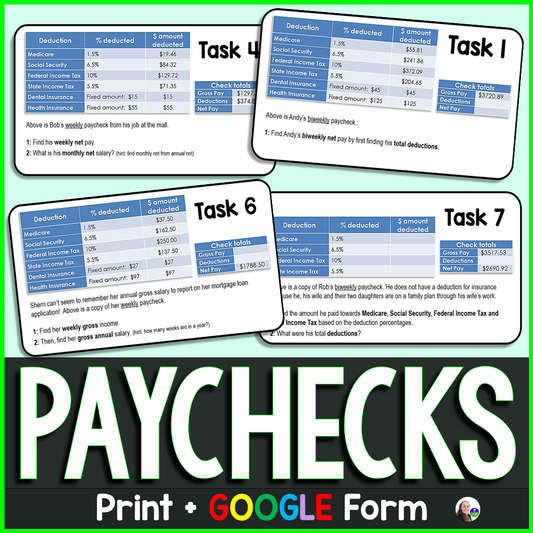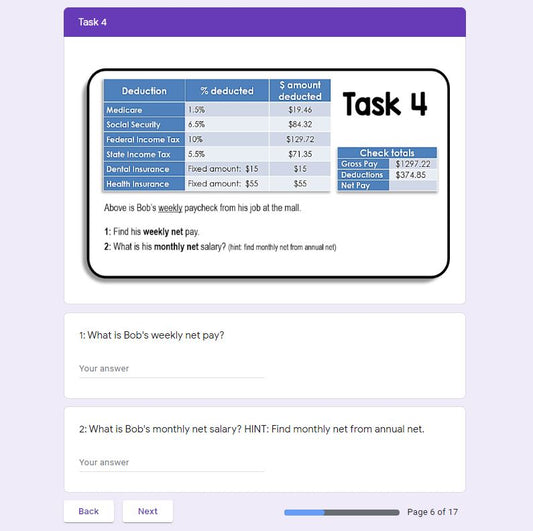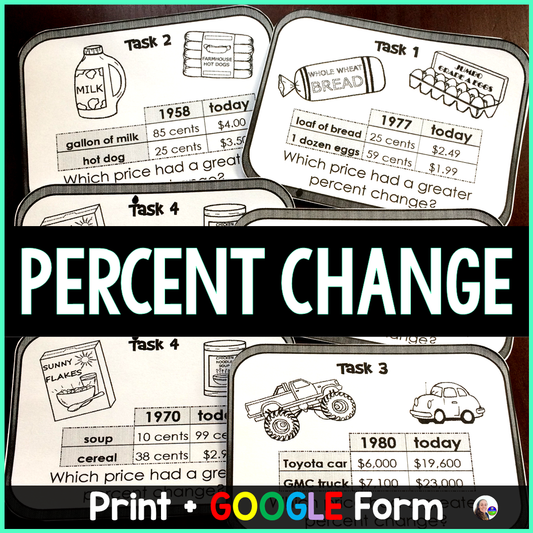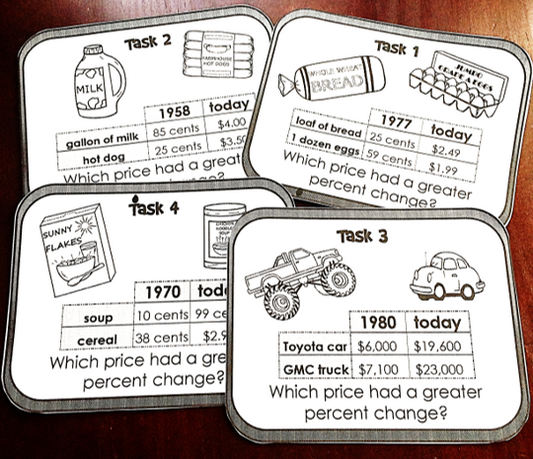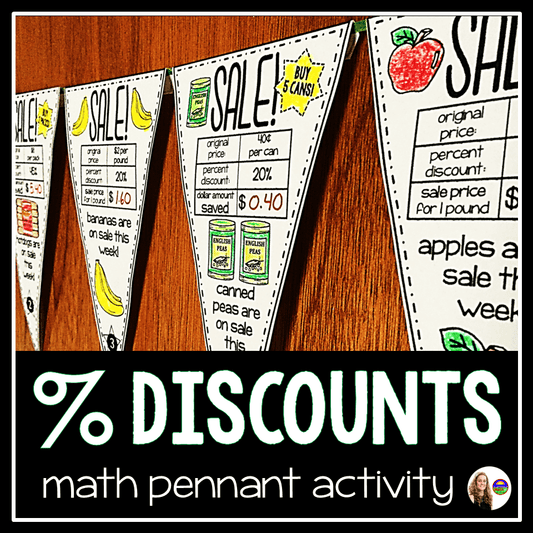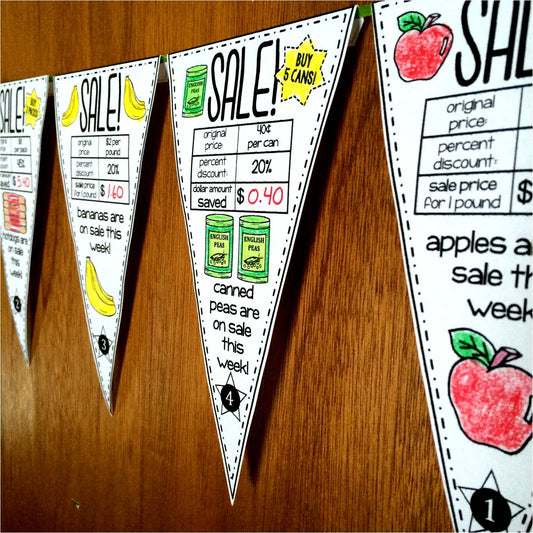Collection: Consumer Math
Here you'll find consumer math materials that make teaching the course easy and enjoyable. There's an 18-unit print-and-go consumer math curriculum, a big bundle of printable and interactive digital consumer math activities, a financial literacy vocabulary word wall, projects and a free 1040 cheat sheet that is updated every year.
-
Scaffolded Consumer Math Curriculum
37 reviewsRegular price $100.00Regular priceUnit price / per -
Consumer Math Activities Bundle
444 reviewsRegular price $34.00Regular priceUnit price / per -
Financial Literacy Vocabulary Word Wall | Consumer Math | Personal Finance
159 reviewsRegular price $12.00Regular priceUnit price / per -
Budget Project
44 reviewsRegular price $3.00Regular priceUnit price / per -
Buy a Car Project
35 reviewsRegular price $3.00Regular priceUnit price / per -
Filing Income Tax Task Cards - Federal Income Taxes 1040 Activity
218 reviewsRegular price $3.50Regular priceUnit price / per -
Making Change, Counting Money Task Cards Activity
10 reviewsRegular price $3.00Regular priceUnit price / per -
Integer Operations Manipulative
511 reviewsRegular price $4.00Regular priceUnit price / per -
Consumer Math Warm-Ups 18 Units of Financial Literacy Bell Ringers
3 reviewsRegular price $7.00Regular priceUnit price / per -
Tax Forms 1040, W-2, 1099, Schedule 1 Consumer Math Scavenger Hunt Activity
No reviewsRegular price $3.00Regular priceUnit price / per -
Budget Task Cards Personal Finance Budgeting Activity
224 reviewsRegular price $3.00Regular priceUnit price / per -
Unit Price Digital Math Escape Room
10 reviewsRegular price $3.00Regular priceUnit price / per -
Calculating Markup and Markdown Percentages Coloring Worksheet
No reviewsRegular price $1.00Regular priceUnit price / per -
"2 Truths and a Lie" Paycheck Deductions Net & Gross Pay Error Analysis Activity
No reviewsRegular price $1.50Regular priceUnit price / per -
Paycheck Task Cards Financial Literacy Activity
95 reviewsRegular price $3.00Regular priceUnit price / per -
Percent of Change Task Cards Activity
197 reviewsRegular price $3.00Regular priceUnit price / per -
Percent Discounts Grocery Shopping Math Pennant Activity
176 reviewsRegular price $3.00Regular priceUnit price / per


